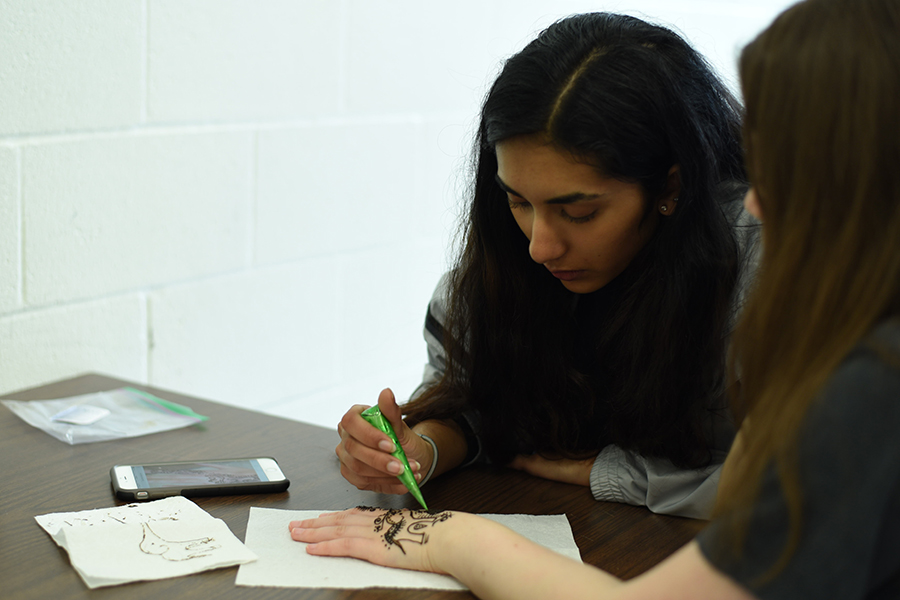Student studies, practices age-old art form
May 9, 2017
Centuries ago, desert dwellers in the Middle East discovered that a plant-based paste, previously used for its cooling properties, left a temporary stain on their skin. This discovery inspired them to create patterns and designs on themselves.
The paste they used was made from the crushed leaves of a plant called hinna in Arabic, which the English translated as henna. Though the plant is called henna, the dye it makes is also called henna.
Henna can be used in a variety of different ways.
Egyptians painted mummies with henna before burial. Henna was also used as a sort of temporary tattoo during celebratory occasions, such as weddings and traditional dances.
Today henna is still used as skin decoration and is even used to dye one’s hair and nails.
Prutha Gajakas, sophomore, was introduced to henna during her visits to India and has been interested in the art ever since.
“I’ve always liked the patterns and I’ve always liked to draw them,” she said.
Gajakas was born in Ohio, but lived in India from the time she was 1.5 to 3 years old. Her father’s side of the family lives in Mumbai (Bombay), and her mother’s side lives four hours away in Pune.
Gajakas takes a 20-hour flight every three to four years to visit her family in both places. She was 7 years old the first time she visited her relatives and got her henna done.
When she came back, her first grade classmates asked her if the henna was a disease or if she had drawn on herself with a marker.
Gajakas became seriously interested in henna when she attended a five-day long henna camp over Spring Break.
There she “learned how to make the paste, roll the cones, [and she] started basic beginner designs on paper,” she said.
She had to combine “boil[ed] tea [leaves], lemon juice, sugar, and essential oils” to make the paste.
Before she could make henna designs with the paste, Gajakas had to draw them with a pen on paper. After that she was able to use a mixture of glue and water to practice the designs.
Gajakas takes henna lessons on Sundays from 4-6 p.m. at Kaushika Panchal’s house, which was also the location of her henna camp.
Panchal is an artist and longtime friend of Gajakas’s mother. Panchal specializes in portrait sketching, painting, and henna.
“I’ve always liked to paint, draw, [and] doodle,” Panchal said.
Panchal has been a professional artist for three years. When she paints she prefers to use henna cones over brushes.
A henna cone is very similar to an icing bag. The cone is rolled from a square of a desired material, then taped together so that when the henna paste is put into it the only place it will be distributed from is the small hole cut on the end of each cone.
Although Gajakas enjoys this art, she wants to be a veterinarian for a career.
Designs in henna have meanings
All art has meaning, and the art of henna is no different. While many people may be too distracted by the delicate designs to notice, many symbols contain benevolent messages in henna.
Some symbols derive from flora, such as the Clover, which depicts good fortune, prosperity, health, love and fame. Ivy signifies friendship and fidelity while a Lotus symbolizes harmony, purity and heart.
Rebirth and renewal are represented by dragonflies, phoenixes, rivers, suns and serpents. Protection is shown through spirals, cats, dragons and scorpions. Moons, leaves and eyes portray protection and prosperity. Peacocks illustrate beauty and immortality.
Butterflies, birds and keys depict freedom while feathers symbolize order and justice, and trees embody staying grounded. Trees also mean growth as do spiders. And the famous yin and yang symbol depicts balance and the link between opposites.

